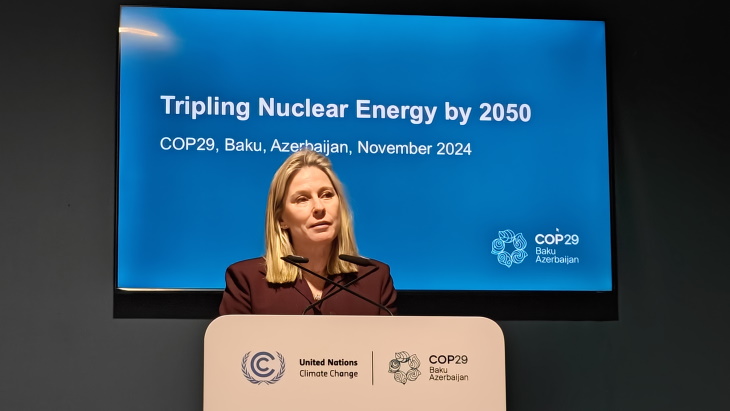Holtec unveils energy storage system for district heating
.jpg)
The system comprises two modules called the Preservator and the Steam Chest. The Preservator preserves stored heat, while the Steam Chest maintains an inventory of steam to stabilise the supply system. With no moving parts or "life-limiting constituents", the HI-HEAT system "should be reasonably expected to serve satisfactorily for many, many decades", the company said.
The largest factory-manufactured system envisaged is the HI-HEAT 100, a 29.3 MWh system that can deliver cycle steam at the desired rate of flow to a district heating grid. "If adequately replenished with intermittent surplus electric power from the grid, the HI-HEAT systems can be sized to deliver heating steam continuously and indefinitely. Because there is no limit on the number of systems that can be deployed in parallel at any site, there is no limit on the supply of steam available for district heating or any other application," the company said.
Holtec said it expects to manufacture the systems near to where they will be used, using mostly locally sourced materials, although as it draws surplus energy from the grid, the district heating system may be "hundreds of miles away" from where the electricity is generated. In most cases, the company said, the system "will simply retire and replace" existing gas boilers used for district heating.
"We think burning gas extracted from the land to pollute the environment is scandalous misuse of a natural resource that is best used to manufacture valuable industrial materials such as chemicals, plastics and the like," Holtec CEO and Chief Technology Officer Kris Singh said. "We envision the HI-HEAT district heating systems to be powered by the operating nuclear plants in the near term and by our SMR-160 advanced light water reactors in the next decade when we hope to begin commissioning our reactors in increasingly larger numbers to decarbonise the global environment."



_53540.jpg)









